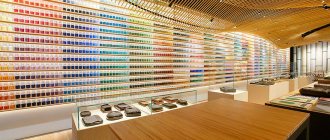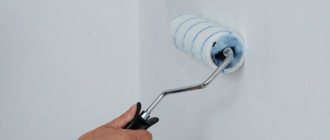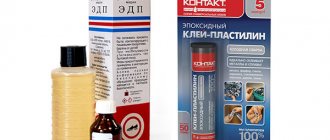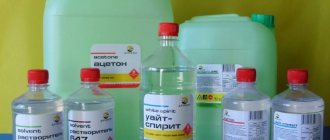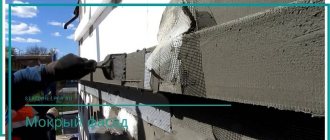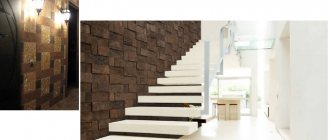Lacquered furniture never goes out of fashion. Elegant and attractive, it allows you to radically transform the interior and bring into it a touch of familiar home comfort. When processing it, modern furniture varnishes are used, which protect the surface from mechanical stress, increase resistance to moisture, and prevent cracking and deformation. The construction market offers consumers a wide selection of paints and varnishes, which should be selected depending on their composition, purpose and expected effect.
Types of furniture varnishes by effect
The choice of composition based on visual effect largely depends on the wishes of the buyer himself. Whether you want to emphasize the noble structure of wood, give it more naturalness or a characteristic shine - all this determines the characteristics of furniture varnish for wood and divides it into several categories:
- Glossy and semi-gloss – gives a mirror effect and increases the decorative properties of interior items.
- Matte and semi-matte - allows wood to look as natural as possible and hides surface defects well.
- Colored – provides the furniture with the necessary shade. With its help, you can visually transform inexpensive types of wood into rare and noble types of wood.
- Craquelure is a specific varnish for wood furniture with a cracking effect, which gives the products an aged, antique look.
Types of varnishes by composition
The most extensive classification of paints and varnishes involves their division according to the main component included in the composition. Depending on this, the following furniture varnishes are distinguished:
| Buy furniture varnish |
| 8 (495) 995 40 39 |
- Water-based - products containing water, a binder (for example, acrylic or polyurethane) and various additives. Such materials are environmentally friendly, odorless and form a durable film with high wear resistance.
- Polyurethane – varnishes for wooden furniture based on urethane. They are among the most durable and abrasion resistant. Their high price is offset by the ability to create a coating with excellent performance characteristics that will last for many years.
- Oil based – materials based on natural oils. They form a waterproof film, but have a fairly long drying time.
- Nitrovarnishes are compositions that include colloxylin, synthetic resins, solvents and plasticizers. These wood furniture varnishes dry quickly and provide a durable finish, but contain toxic substances that can pose a health hazard.
- Alkyd – products based on organic solvents and alkyd resins. They are characterized by excellent water resistance, but their drying period is up to three days.
- Alcohol - varnishes based on alcohol and natural resins. They have good mechanical strength and adhesion to any surfaces. Among the disadvantages, it is worth highlighting the lack of resistance to high humidity.
Types of varnishes by purpose
When making furniture varnishes for wood products, many manufacturers mix them with special additives that allow the treated items to be used under special conditions. Based on their purpose, compositions are divided into several types:
- Heat-resistant – keeps furniture in its original form when used at high or low temperatures.
- Weather resistant – provides protection for surfaces that are exposed to the elements.
- Water-repellent – furniture varnish that protects against high humidity (for example, when applied to garden furniture).
- Impact-resistant – protects against mechanical influences (impacts, chips, scratches).
Modern brands
Each period of time has its own design trends. Today, antique-style furniture is in demand. Therefore, a way to give it this look has become very relevant for manufacturers. Using craquelure varnish, it is not very difficult to achieve the effect of aging furniture. The main thing is to know how to apply it.
When applied, there is a special way of drying. It is this that gives the new furniture an “old” look. Dehydration of the top layer occurs, which causes the formation of islands and cracks over the entire surface. The master chooses his own method of application. The result is an unusual and antique look for each piece of furniture.
Using furniture varnish, you can very easily change the appearance of your furniture, update the coating, and hide any defects on it. It should be added that this method prolongs the service life and makes the surface protected. All that remains is to make the right choice.
The popularity of natural interiors is explained by their natural beauty and complete harmlessness to human health.
An integral part of this type of home decoration is wooden furniture: if it is not additionally coated with a protective layer of paint or furniture varnish, it will quickly become cracked and deformed. The latter finishing option is more preferable, as it allows you to preserve (and sometimes emphasize) the natural beauty of the wood.
Water-based furniture varnishes
Water-based compositions are among the most popular paints and varnishes because they are safe for health, easy to apply and have a short curing period. The product is characterized by the formation of an elastic coating, which not only decorates the tree, but also provides its preventive protection. On the other hand, it is undesirable to use such furniture wood varnish in places with high humidity, since it does not have water-repellent properties.
If you are looking for high-quality water-based formulations, in the TBM-Market store catalog you can find a wide range of products that meet the accepted criteria of quality and environmental friendliness.
| Buy |
Polyurethane varnishes
Urethane-based materials can be used for both internal surface treatment and external use. Furniture polyurethane varnish for wood is not afraid of humidity, solar radiation and negative environmental influences (including sea water), therefore it is successfully used even in difficult operating conditions.
Its main advantages include increased strength and wear resistance, the ability not to crack during deformation, and excellent adhesion to all types of wood. Depending on the composition, the product is divided into one-component (completely ready for use) and two-component, which must be mixed with a hardener before application.
An interesting example of developing chipboard painting technology from True Factory
Let's give a practical example from True Factory, which concerns the painting of melamine-coated chipboards. The manufacturer encountered poor adhesion of the paint and varnish coating, which is, in principle, expected for surfaces with low porosity.
The low-quality soil from a little-known manufacturer used by the company did not help. True Factory technologists conducted a series of tests using different options for adhesive primers.
The best results were obtained using the following combination: Sayerlack TUL3530/00 Adhesive Primer for Melamine Paper (100%) + TH0790/00 Hardener (10%) + DT0452/00 Solvent (40%).
See the results in the photo below, in the photo test before and after using the TUL3530/00 adhesive primer. For testing, we used a familiar adhesion test - lattice cuts.
What does this experience from True Factory show us? First of all, do not be shy and contact the technologists of paint suppliers in case of problems with painting chipboard, laminate in terms of adhesion and more, to select the required adhesive primer and obtain stable painting results.
| Rice. 3. Adhesion of paintwork materials before applying adhesive primer |
| Rice. 4. Adhesion of paintwork after applying adhesive primer |
Feedback from site visitors:
I’ll tell you about my own experience in painting chipboard and film facades in furniture production.
Painting chipboard
Chipboard was painted, but rarely when the project indicated that, for example, the outer side wall of the kitchen or the details of the portal had to be the same as the painted or patinated facades.
In this case, the surface of the chipboard was sanded with paper of P220 grit or coarser in order to break the top protective layer of the laminate on the chipboard to a matte surface. Next they applied paint, but more often they worked according to the scheme - sanding, one layer of primer, sanding, finishing. No adhesives were used.
Problems arose if the edge was poorly glued and after finishing the paint fell into places where the edge did not fit well, worse if it peeled off, but again this was due to poor performance of the gluing equipment, a violation of the gluing technology.
Painting facades covered with PVC film
We had to resort to the technology of painting film facades in order to simplify the technology of painting facades with complex internal milling.
What were the difficulties: the main ones were the labor intensity of grinding complex milled profiles and the risks of damaging the profile itself, which already required reworking the facades.
In addition, it was necessary to apply sealing primer, sand it, apply base primer, sand, apply primer again, and sand again. In the case of film, the surface and profile of the MDF facade in PVC film were simply pre-grinded and finishing layers were applied.
It turns out that the technology was reduced to a minimum, well, sometimes they could apply primer to the film before painting, but sanding the primer in this case was much easier than sanding unlined MDF.
An important point in all this is how well the film is glued to the MDF facades. If the film peels off from the edge, if there are inclusions under the film, glue sagging, poor-quality milling, poor preparation of the facade surface before pressing, then we will get not the advantages, but the disadvantages of this technology.
Therefore, the technology for pressing facades in a membrane vacuum press must be at a high level.
In addition, the film itself must be selected for the facades. Firstly, it should be white, and secondly, it will be better if it is intended just for painting, that is, without a protective top coating.
Film suppliers called this film primer. In principle, you can use just white film, but a trial application and an adhesion test are necessary.
Interestingly, no adhesive primers were applied to the film facades; it was enough to matt the film by sanding. But, in any case, experiments are always needed, and then mass application of the technology, otherwise primer may be needed to improve the adhesion of paint to film or chipboard. For such primers, contact your suppliers, they will help you select the necessary paints and varnishes.
The chipboard cabinet in the hallway has lost its decent appearance. The design is successful and functionally it is still in fairly good condition. Is it possible to apply varnish to chipboard to refresh the look of “tired” furniture surfaces?
Is it possible to apply varnish to chipboard?
You can apply varnish to chipboard, but surface treatment will take a long time, since a perfectly flat surface is needed for the varnish.
The chipboard cabinet in the hallway has lost its decent appearance.
If this is a cabinet, then we are not talking about simple chipboard, as in the photo above, which is purchased as a raw material for construction work; chipboard was used for the cabinet, but it was additionally processed with something to give a good appearance, which was already “lost.”
Criterias of choice
To purchase the most suitable varnish for furniture, you should pay attention to the key features of the proposed items. When purchasing, it is recommended to consider the following criteria:
- Ecological cleanliness. Water-based products are considered the safest, while varnishes based on organic solvents have an unpleasant odor, so they require the use of respirators during application.
- Fire resistance. The most fire-resistant varnishes for wood furniture are those that do not contain solvents.
- Method of application. One-component materials are easier to process because they do not require pre-mixing, but two-component materials are considered to be of higher quality and more reliable in further use.
- Decorative. Oil-based products provide the greatest decorative value. If you want to give your furniture an antique effect, you should choose craquelure materials.
If you find it difficult to purchase the optimal composition, consultants will help you choose and select exactly the furniture wood varnish that is best suited for your interior items.
Buy furniture varnish
|
|
Application method
The question often arises about how to varnish furniture. There are many methods. One of them is to apply the product to furniture from an aerosol can. You can save money by buying an aerosol, since no additional tools are required (roller, brush, cleaning agent).
The consumption of the traditional method of application is greater than that of spraying. The entire surface is painted evenly, and it takes less time. Another advantage of the aerosol is that you can varnish furniture even in places that are most difficult to reach with a classic brush. Finding such a product is not difficult. Every hardware store has it in its assortment. Furniture varnish in the form of an aerosol is most often used for restoration work. For initial coating, it is better to choose a regular composition.
